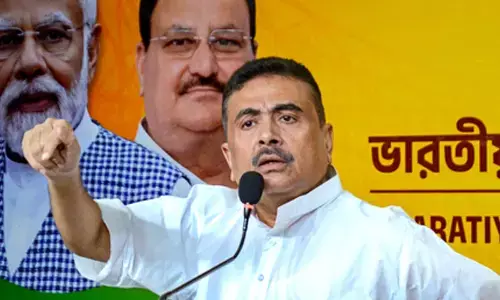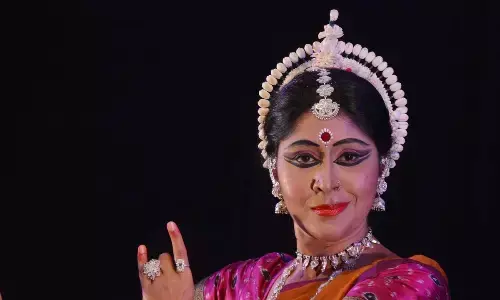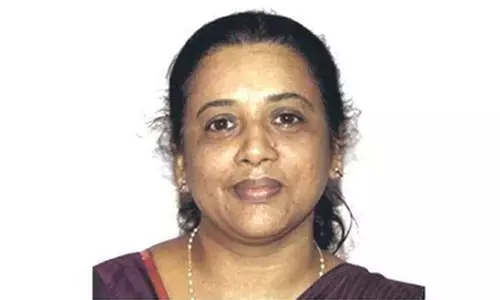Manmohan’s revenge

Manmohan’s revenge, Narendra Modi, Sonia-Rahul gameplan in UPA-1 and UPA-2. Why did he do this? Singh knows that the disappointing performance of UPA-2 has more to do with Sonia-Rahul politics than his own economics
Decoding why he said what he did
One has always sought answers to the following questions: why did an “honest” PM allow dishonest people to loot the exchequer? Why did Manmohan Singh never assert himself with Sonia Gandhi, despite knowing that he was her most trusted option as PM? She needed him more than he needed her. And why did he take all the flak and criticism on behalf of the dynasty? And why, why could he not have resigned if he was truly against the venality that surfaced during UPA-2? We have to wait for his autobiography to find that out, and even then we may not. But an elementary understanding of human psychology suggests how Manmohan Singh deals with such issues: with guile and subtlety rather than by confronting issues head-on. He is a survivor. Attacks on his persona are met through a strategy of displaced aggression or indirect revenge -- where you show anger against your real tormentor by making someone else the target of it, or by hitting back indirectly. In 2009, Manmohan responded to the charge of being a weak PM and dynasty's doormat by giving it back to LK Advani.
At Friday’s press conference, when confronted with the public perception that his stewardship of India has been disastrous, he lashed out at Narendra Modi instead. Having Modi as PM would be "disastrous" for the country, Singh said. Even though this was in response to a journalist's question, Singh had the option of dismissing Modi’s challenge or saying he did not believe in “communal” politics, but he chose strong language. This is classic displaced aggression, for Modi has not usually targeted the PM; he goes for the dynasty. By erupting as he did, Manmohan Singh ensured that the media narrative the next day would be about Modi rather than his non-performance; moreover, it would take the spotlight temporarily away from the Aam Aadmi Party (AAP), overplaying which is the Congress party’s current strategy. He thus went against the Congress strategy.
Why did he do this? Singh knows that the disappointing performance of UPA-2 has more to do with Sonia-Rahul politics than his own economics. But he could not say this openly, and hence his decision to move the target elsewhere. There is nothing as humiliating for a man (or woman) to feel obligated to somebody, to be bound hand-and-foot to them, and to be forced to support things you don't fully believe in. Displaced aggression is one way to express at anger at your own impotence.
However, one can analyse Singh’s statements further. Reading between the lines of Friday’s presser, we can discern many things: far from merely being a Gandhi family loyalist, Manmohan Singh has actually subtly exacted his revenge on them by ensuring that they cannot distance themselves from his record. The presser was not only to rule himself out of the top job in 2014, but to send a message to his boss.
The Sonia-Rahul gameplan in UPA-1 and UPA-2 has always been this: take credit for the government’s achievements while distancing themselves from its failures. What Manmohan Singh did at the press conference was to ensure this did not happen: this is why he openly listed its successes and failures and ensured Sonia and Rahul were inextricably linked to it. In his prepared statement, Singh talked about the UPA’s achievements, especially in the social sphere, and its failures – on employment and inflation. We know that many of the social sector spending schemes emanated from Sonia Gandhi’s National Advisory Council – and Manmohan Singh took due credit for them.
But he also listed the failures and linked them to the successes. He said that inflation had not been tamed, but rural wages were also rising faster than inflation. That’s a neat way of saying Sonia Gandhi’s schemes ensured higher wages and higher inflation. So don’t blame me for it all. He also said the government had been less successful in raising manufacturing employment, but he also mentioned the NREGA employment plan. One can put two and two together and see what he is trying to say: we created jobs and also failed to create them. Now figure out whether it was because of me or Sonia. And just in case you missed the point, he pooh-poohed all talk of him and Sonia drifting apart – a story which would have suited Sonia in case she wanted to distance herself from his legacy. He said: “It is a remarkable achievement that I have been able to finish 10 years as PM without any hiccups in the relationship with Mrs Gandhi. For me her support has been an enormous help in dealing with very complex issues.” In short, she was critical for everything that happened in UPA. She can’t wash his hands off him now.
Next consider how he talked about the corruption cases. He said two things. First, he said he took the right stand on 2G and Coalgate, seeking auctions or market-determined pricing. (We know that the final political decision was to let A Raja have his way in 2G and various politicians to make hay with an opaque coal blocks allocation system). Second, he said that these two scams happened in UPA-1, and the people voted the government back. While it is easy to see in this a self-serving argument, the statement indirectly points out that politics dictated certain decisions, and the election results bore those out. Now who apart from his political boss can take political decisions when he himself was advocating transparency in 2G and coal block allocations? “I honestly believe history will be kinder to me than contemporary media…”, Singh said.
Was he trying to say that history would blame the dynasty as much as him, if at all? Equally significant are his two statements on Rahul: He said that UPA-2 would have been strengthened if Rahul had been part of the government, and also that “Rahul Gandhi has outstanding credentials to be nominated for PM.” (He actually said Rahul for president, but one assumes that was a Freudian slip.) The meaning of the first statement is that it would have forced Rahul to take responsibility for his government’s actions, and the meaning of the second is that if you are now trying to distance yourself from me, I will not let you do that. If a discredited Manmohan Singh is endorsing Rahul, it can hardly be a compliment to the Gandhi scion. Singh is inextricably tying his record and reputation to that of the Gandhi family – for better or worse. Manmohan Singh’s message to the dynasty was simple: “I took the rap, now don’t pretend you are better than me.” It is his quiet revenge.
It is impossible to understand why Singh behaved as he did without speculating on the human dynamics of the Sonia-Manmohan equation. In 2004, it is clear why she chose Manmohan over Pranab or Arjun Singh or other Congress heavyweights. She needed someone who would be totally loyal to her and advance her dynastic agenda. Singh understood this and certainly accepted his part of the bargain.
In UPA-1, this bargain - loyalty in lieu of the PM's post - worked wonderfully for both parties for two reasons: the economy was coasting along and generating huge taxpayer revenues for bankrolling Sonia's social schemes. The second reason is Left support: Sonia used the Left's support to push Singh's economics along the path she wanted rather than what Singh and P Chidambaram might have wanted. But the Indo-US nuclear deal overturned this cosy consensus. Manmohan used it to push the Left away, and Sonia -- at a crucial point in UPA-1's tenure -- was obliged to support him despite reservations. She was conscious of Manmohan's passive aggression on this front. Luckily for both, the Samajwadi Party rode to the rescue of both Sonia and Manmohan, and cash-for-votes saved the government in 2008. A robust economy brought in the votes in the general elections. This is why Manmohan Singh talked of the nuclear agreement as the high point of his life as PM. It gave him his own space without having to be disloyal to Sonia.
However, then it all started unravelling. The last months of UPA-1 and UPA-2 saw the Manmohan-Sonia compact coming under repeated pressure. When 26/11 happened, Manmohan Singh saw it as a golden opportunity to move Chidambaram out of finance to home. But while Sonia agreed to move the ineffectual Shivraj Singh from home, she declined to allow Singh to get his own choice of finance minister – which would have been either Montek Singh Ahluwalia or C Rangarajan. She opted for Pranab Mukherjee, knowing he would keep Manmohan Singh in check. Mukherjee was the go-to man in UPA-2, but his hands-off relationship with Singh ensured that he got neither Manmohan’s support nor Sonia’s to fix the economy.
As the fiscal deficit careened out of control and the economy started heading perilously downward, Sonia saw the Rahul succession plan in jeopardy. She scotched Manmohan's plan to bring in his pals to the finance ministry by bringing Chidambaram back instead. It would have been ideal from her point of view if Manmohan Singh were to take the rap for economic failures and allowed her to replace him either with Rahul or a stopgap PM till the polls. This could be one reason why two ministers close to Singh – Pawan Bansal and Ashwani Kumar – were both targeted and forced to resign. But Manmohan Singh did not oblige. And Sonia could do little.
A few months ago, Rahul Gandhi openly embarrassed the PM by calling the ordinance to protect convicted legislators as “nonsense” – but Manmohan again thwarted the family by refusing to be humiliated and resigning. He pointed out that the Congress core committee had backed this decision and stay put. On Friday, when Manmohan Singh said he had “never felt like resigning" he was essentially telling the Gandhi family that you can['t get rid of me just like that when I have done your bidding. In all his moves, and also in his press conference, Manmohan Singh’s underlying message is this: “I have served the dynasty; the dynasty now has no business distancing itself from me.” This is his revenge on Sonia and Rahul for allowing him to live a life of humiliation.
The writer is Editor-in-Chief



















